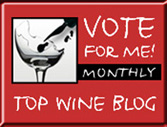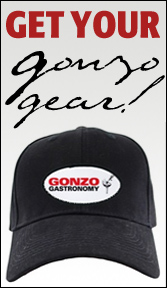 It’s been WAY too long since we’ve done an Angel vs. Demon face off, so let’s get to bustin’ heads and takin’ names. I recently had a bottle of wine from the Languedoc region of France that I ordered from one of my favorite wine hunters— Garagiste. Because the wines that I buy from them are wines I’ve never actually tasted, I usually only buy 2 bottles. That way, if I hate it, I’m not stuck with a case of it. On the other hand, if I love it, I know to order plenty more next year. In this case, the wine had such an effect on me that I didn’t have the patience to wait another year for the next vintage to be released…I wanted more, and I wanted it now. But let’s get down and dirty about the Languedoc region first, and the ongoing battle there between the angels and the demons of winemaking.
It’s been WAY too long since we’ve done an Angel vs. Demon face off, so let’s get to bustin’ heads and takin’ names. I recently had a bottle of wine from the Languedoc region of France that I ordered from one of my favorite wine hunters— Garagiste. Because the wines that I buy from them are wines I’ve never actually tasted, I usually only buy 2 bottles. That way, if I hate it, I’m not stuck with a case of it. On the other hand, if I love it, I know to order plenty more next year. In this case, the wine had such an effect on me that I didn’t have the patience to wait another year for the next vintage to be released…I wanted more, and I wanted it now. But let’s get down and dirty about the Languedoc region first, and the ongoing battle there between the angels and the demons of winemaking.
The Languedoc-Roussillon has long been the largest wine-producing region in the world, not that you could tell by your average wine consumer’s purchases. It’s responsible for more than one third of France’s total wine production (more than the entire US) and yet talking about the area to the guy standing next to you in a wine shop will usually meet you with a shrug, a shaking head and a glazed look. Unfortunately, most people were introduced to the region in the worst way possible: mass-produced, crap-quality Vin de Pays d’Oc. Though there may be a lot of great juice carrying the Vin de Pays regional designation now, much of what is promoted and widely available in the U.S. comes from huge co-ops, where quantity, not quality, is king. The rabbit-like mass production has contributed to several decades of surplus wine in France, and to what they not-so-lovingly call the European “wine lake.” Now, a lot of folks there are focusing on making quality wine and the Languedoc is stuck between the old and new worlds of wine production—kinda like the Luke Skywalker of wine regions. It’s been around forever, but is only recently starting to make its mark with serious wine, so bargains are o’plenty, much like in Portugal, Argentina, Chile and South Africa. Problem is, that guy standing next to you in the wine shop is way more likely to have a $12 bottle of Argentinian Malbec in his basket than he is a $14 Minervois—and it’ll be his loss.
Welcome to the ring, the “angel” wine that had me begging Garagiste for the rest of their inventory, emailing the wine maker in search of US importers, and hunting down local distribution at 11:30PM—2005 Mas des Dames Coteaux du Languedoc. Coming from an all-women winery, this red blend is my equivalent of truly soulful wine. If you dig Chateaneuf du Pape, Priorat or any of the old-vine Grenache, Carignan and Syrah wines, this will no doubt turn you on. It’s elegantly restrained instead of throwing an over-oaked mess in your face (there’s no oak), and it’s deep and meaty and earthy. With alcohol levels at about 13%, it’s also what the CdPs used to be a couple of decades ago—food friendly. To quote Garagiste, “The wine is an obvious expression of feminine winemaking and a tender hand—it stands out among so many rustic examples that almost achieve their goal but never quite get there. This wine races past the finish line with much in reserve for a rainy day and keeps getting better every time I try it (scary, considering I was so enamored with it last year).”
In the other corner is the “plonk in a bottle” demon of the round—2005 Fat Bastard Merlot. This is one of those times when I reiterate just how much I must love you people for purposely drinking a wine like this, just so I can tell you how bad it is. Fat Bastard is one of those French attempts to make the obscure more plebian. Don’t get me wrong, it’s a valiant worthwhile effort, but it certainly ain’t helping the Languedoc get out of it’s plonk funk. I thought of a long litany of descriptors for this loosely-termed wine, but the one that kept coming to mind (and was probably the least sophisticated but most accurate) was “ewww.” That was closely followed by “gross,” “yuck”…oh…and “I want my money back.” OK, fine, if you want winespeak, I think it was bitter, bland, had no finish at all, and to call it simple is to be generous. This is not about snobbery, folks, it’s basics. The two wines have maybe a $5 – $8 difference, but the two are worlds apart not only in value but also in personality.




{ 2 comments… read them below or add one }
Sadly the best of the Roussillon wine is only available to those of us who have time to be in Roussillon.
Sad, but true, Sarah. Unfortunately the best of the region often don’t make it out of the country and over to the US. Let’s hope that changes quickly.